Tower gardens are fantastic, but they can be intimidating to get started with.
If you want to learn how easy it is to get started with tower gardening, read this article about getting your first tower gardening going.

What is a Tower Garden?
A tower garden is vertical, but you use it to grow food aeroponically.
A tower garden comprises large plastic columns, allowing water to flow throughout it.
Rather than treating your plants like houseplants, the tower garden uses the same principles of hydroponics. A plant is grown in a pot and placed on top of another to create columns for producing one or more plants. It allows for maximum airflow, so your plants grow faster and happier.
Aeroponics is a term that describes how plants get their nutrients without having any soil.
For example, instead of putting your plant’s roots in the ground where they would soak up minerals and nutrients from the dirt, suspend your plant above a container full of water, and its roots will be misted with tiny droplets of nutrient-rich water.
With Tower Gardening, you can grow various plants up and down to help save space. Tower gardens are perfect for growing vegetables, small flowers, and herbs.
A tower garden consists of several interlocking plastic columns that hold net pots where the plants grow. The stackable design lets you build your tower as high or low as you want to fit your space.
Now that you know what a tower garden is, let’s set up one!
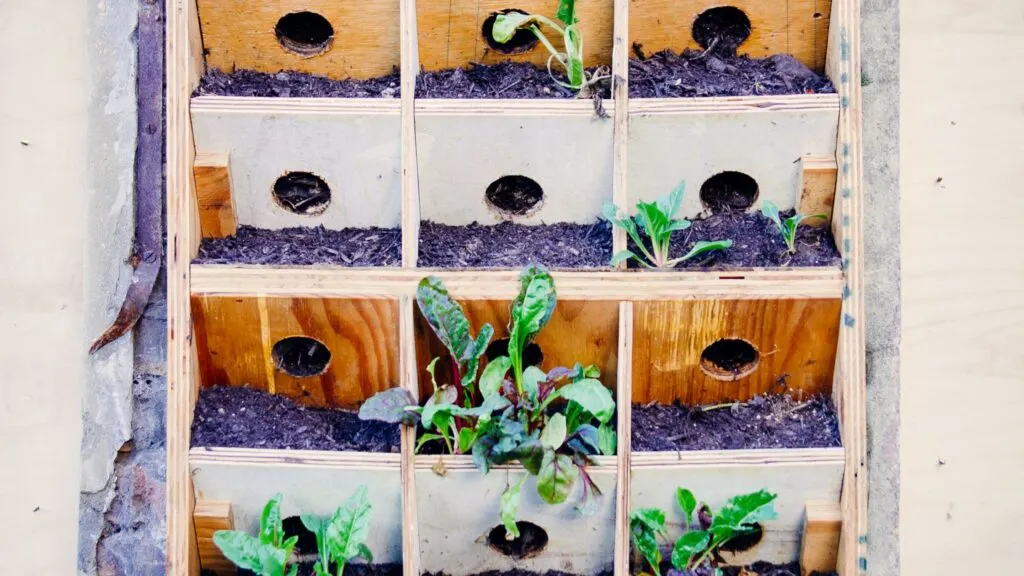
A tower garden is vertical, but you use it to grow vegetables, herbs, and more aeroponically.
A vertical garden comprises large plastic columns, allowing water to flow throughout it.
Rather than treating your plants like houseplants, the tower garden uses the same principles of hydroponics. A plant is grown in a pot and placed on top of another to create columns for producing one or more plants. It allows for maximum airflow, so your plants grow faster and happier.
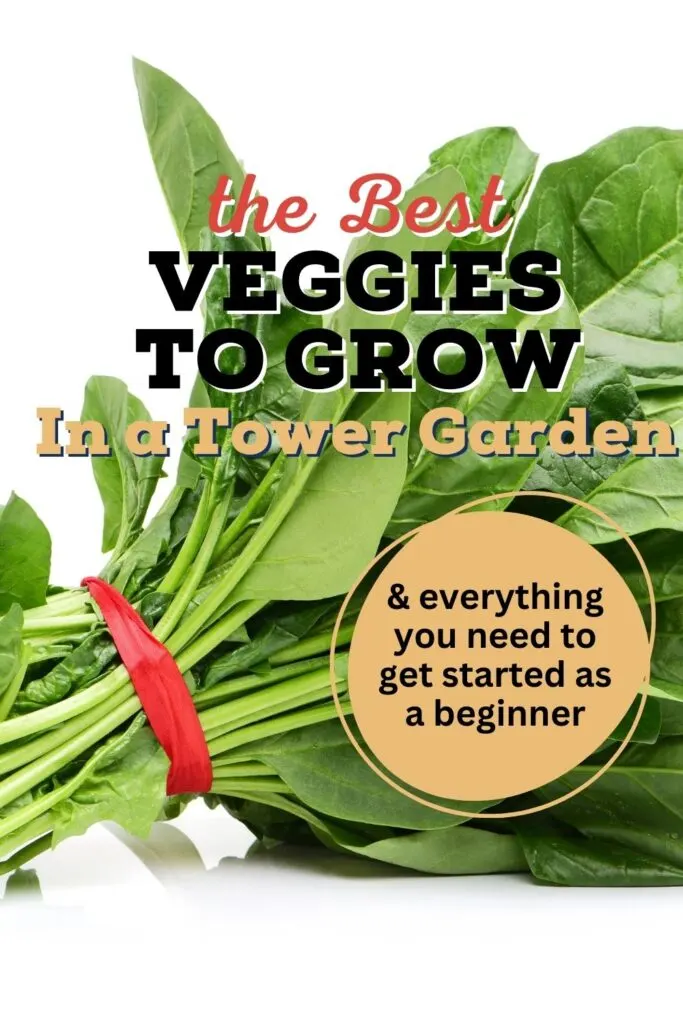
Aeroponics is a term that describes how plants get their nutrients without having any soil.
For example, instead of putting your plant’s roots in the ground where they would soak up minerals and nutrients from the dirt, suspend your plant above a container full of water, and its roots will be misted with tiny droplets of nutrient-rich water.
Vertical Gardening allows you to grow various plants up and down to help save space. Vertical gardens are perfect for growing vegetables, small flowers, and herbs.
A tower garden consists of several interlocking plastic columns that hold net pots where the plants grow. The stackable design lets you build your tower as high or low as you want to fit your space.
Now that you know a tower garden, let’s set up one!
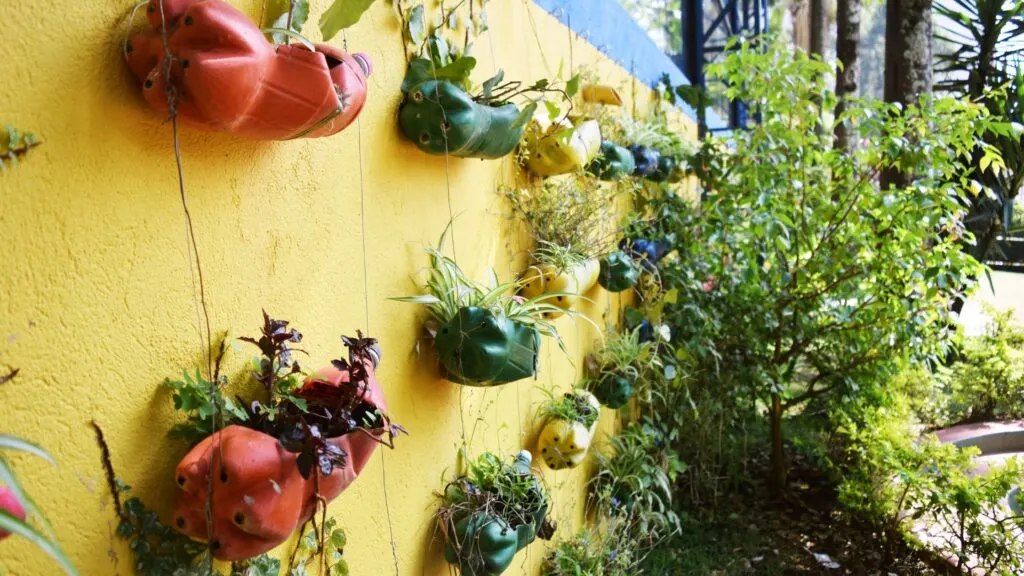
What vegetables or fruit can be grown in a Tower Garden?
A tower garden allows you to grow a wide variety of foods. You can grow vegetables, such as tomatoes and peppers, and herbs, like basil and oregano.
Carrots, Lettuce, brussels sprouts, broccoli, and cabbage are great for low-water plants. You can use the drip irrigation method, or if you want to go more high-tech than that, install a misting system on top of your tower.
When it comes to growing carrots in a tower garden look for mini variety carrots that are perfect for tuber vertical gardens.
In addition, a vertical garden is excellent for growing lettuce and other leafy greens to have a fresh salad on hand from your garden, even in the winter!
Since tower gardens are planted vertically, they use up less space. In addition, you can grow flowers on top of your vegetables or herbs to add a pop of color while saving space.
Add a few inches of soil to the gravel to grow potatoes in your tower garden.
Almost any kind of vegetable will grow well in a vertical garden. Be sure to watch your veggies and harvest before they grow too big when it comes to tower gardening.
To give you an idea of what can be grown, I’ve included this shortlist, which should help get the ball rolling:
- Tomatoes (cherry or regular)
- Spinach
- Cucumbers
- Carrots ( mini)
- Onions
- Eggplant
- Broccoli
- Lettuce
- Snow peas
- Lima beans
- Beets
- Peas
- Swiss Chard
- Peppers (bell or hot)
- Peppers (sweet)
- Cherry Tomatoes
- Strawberries
Types of Flowers to Start in Your Tower Garden
- Calendula
- Dwarf Sunflower
- Violas
- Nasturtium
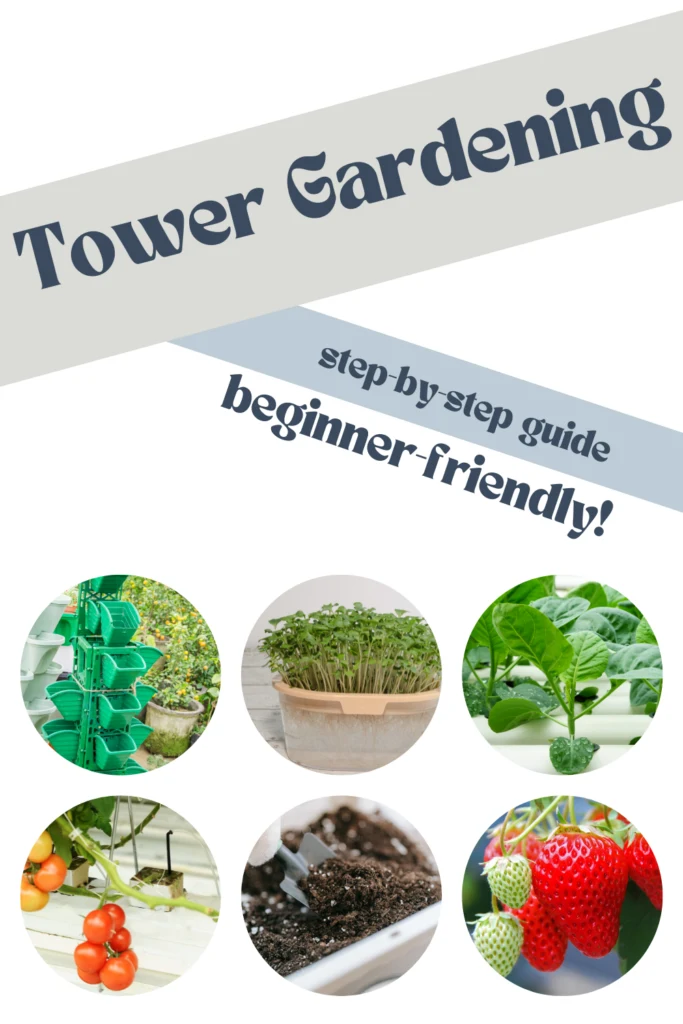
What is the best container for a Tower Garden?
You can eliminate most garden pests when you grow vegetables using no soil. However, the ground can usually harbor harmful pests like root nematodes or other types of parasitic worms.
There’s also the issue of soil-borne diseases affecting your plants, but you can avoid these problems by growing vertically.
It would be best to use a container that is 16 to 32 ounces, 5″ in diameter, or bigger for best results. However, you can also use a larger container to grow flowers in it.
The best kinds of containers for tower gardens are made of plastic. You can use a 5-gallon bucket or even an old milk jug to go more sustainable with your tower garden.
The main thing is that it’s sturdy enough for the weight of the gravel and vegetables/fruits you plant in it.
Here are popular ones from Amazon:
How much does a Tower Garden cost?
The cost to start a tower garden depends on what and how much you want to grow. You can use a DIY tutorial to build one for even less money. However, if you want the convenience of having everything arrive at your door, I have seen pre-assembled towers on Amazon here.
If you cook for a large family, you may want to invest in more than one tower garden. You can get a good deal on a 5-tier tower if you purchase it through Amazon.
However, depending on how many plants you have in each column and if your product requires more water/less water, you may want to use multiple towers so even if one is drying out, the other won’t be too far behind.
Most online tutorials will be free, but purchasing a pre-assembled tower will be the way to go if you want the convenience of having one set up for you to use right away.
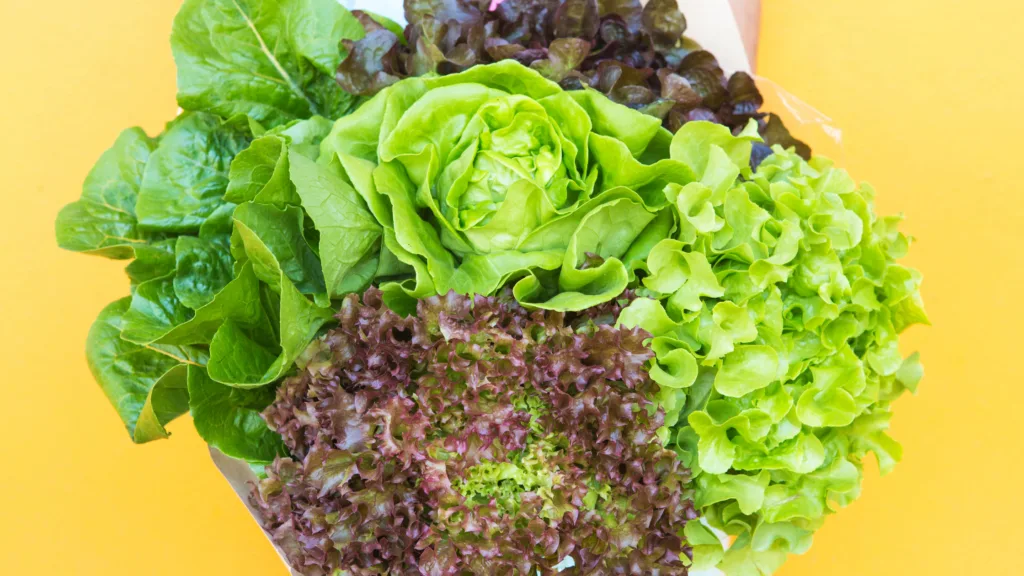
How do I set up my Tower Garden?
When setting up a tower garden, you must first decide where. Next, consider how much water your plants need and if they require more or less sunlight. Next, think about the space available for food production at home.
Filling up your tower garden is simply filling each tier with gravel until you reach the top level. Then, if you are growing leafy greens, you can put soil in the whole story for them to grow.
If you are growing potatoes, leave this tier empty or fill it with your choice of soil or stones that you will cover with a few inches of dirt.
Next, fill up each tier with your desired plant. For example, broccoli and other low-water vegetables can be placed on the bottom level, while carrots and tomatoes will thrive in the middle of your tower garden.
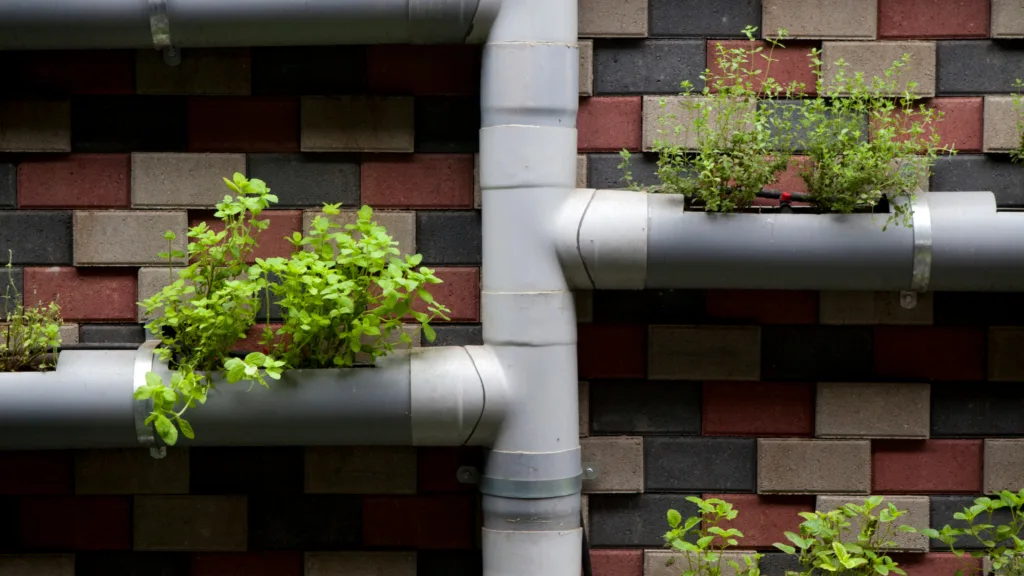
How do I water my Tower Garden?
Once you’ve set up your tower garden, it’s time to learn how to water it properly. You can use drip irrigation, but if you don’t want to invest in this system, you can always use a watering can.
Fill up your watering can and drip the water slowly onto each plant. Again, it’s important not to over-water or under-water your plants.
Is Tower Gardening Organic?
Tower gardens are perfect for organic growing because no soil or pesticides are used. The water used for the plants is fresh because it goes right into the plant’s roots.
This ensures that all of your product tastes as you expect them to.
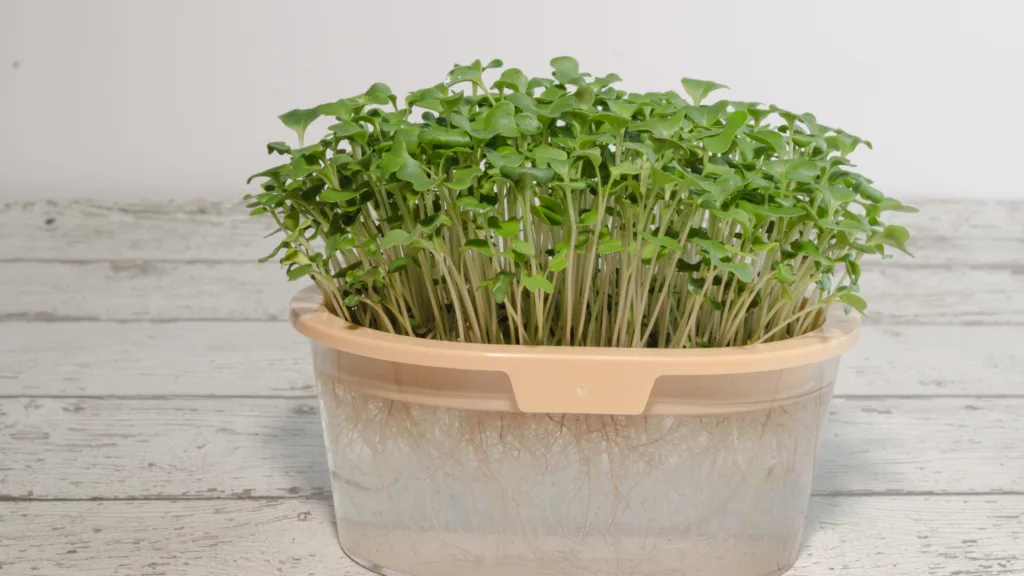
What happens if I don’t do anything with my Tower Garden?
If you don’t water your tower garden for a few days, it won’t just sit there and not grow anything. Some produce will be ready to go, but no new plants will grow if they aren’t watered daily.
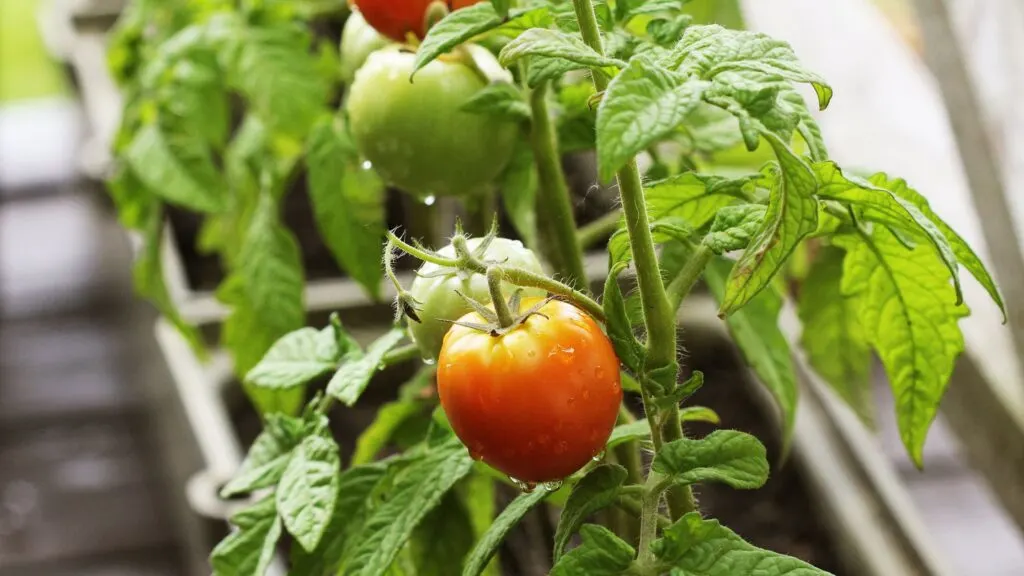
Will the vegetables I grow taste as good as store-bought?
Growing fruits and vegetables in a tower garden will taste slightly different from those grown in the ground because of the lack of soil. However, your product will still be great to eat but may have less flavor.
What are some common misconceptions?
Many people think that tower gardens are suitable for growing large quantities of food, but they only produce one plant per container. So if you want to develop a more significant amount of food in a shorter time, using multiple containers will allow you to do this easily.
How do I maintain irrigation?
One of the benefits of having a tower garden is that it doesn’t take much maintenance. For example, if you have a drip set up, you must refill some water once in a while. You can also fertilize your plants using compost or worm castings to go organic with your produce.
How long does it take to produce food?
Depending on which type of plant you are growing in your tower garden, it can take anywhere from 2 weeks to 1 year for your plants to yield edible produce. You can start harvesting in about 4-6 weeks to grow leafy greens, but some vegetables, like tomatoes, will take longer than others to succeed.
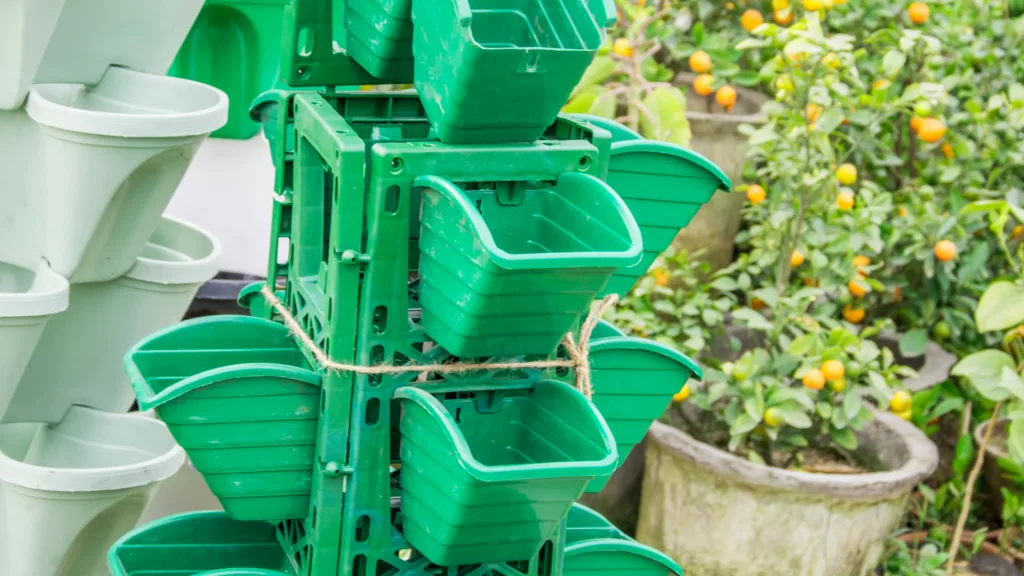
How high should my tower garden be?
When building out the layers in your tower garden, it’s best to go one layer at a time. If you build the bottom layer first, it’s essential to ensure that you can reach each container using a ladder or even a stepping stool.
Ensure that the higher towers are stable enough to climb upon them, and don’t forget to take breaks while you’re at it!
Is the Plastic in a Tower Garden Safe?
It would help to make a tower garden a large, heavy-duty plastic container. You’ll want to ensure that it has a lid and that the bottom of the container can drain any excess water.
The benefit of using a large plastic container is that you can use it for many years. In addition, some recycled materials are in these containers if you want your tower garden to be more sustainable.
Can Children Enjoy a Tower Garden?
It’s good to have your kids help water and care for the plants in your tower garden. A tower garden is perfect for kids because it doesn’t take up much space compared to having a vegetable patch or garden area on your property.
This way, you can spend quality time with them while learning about plants and how to care for them.
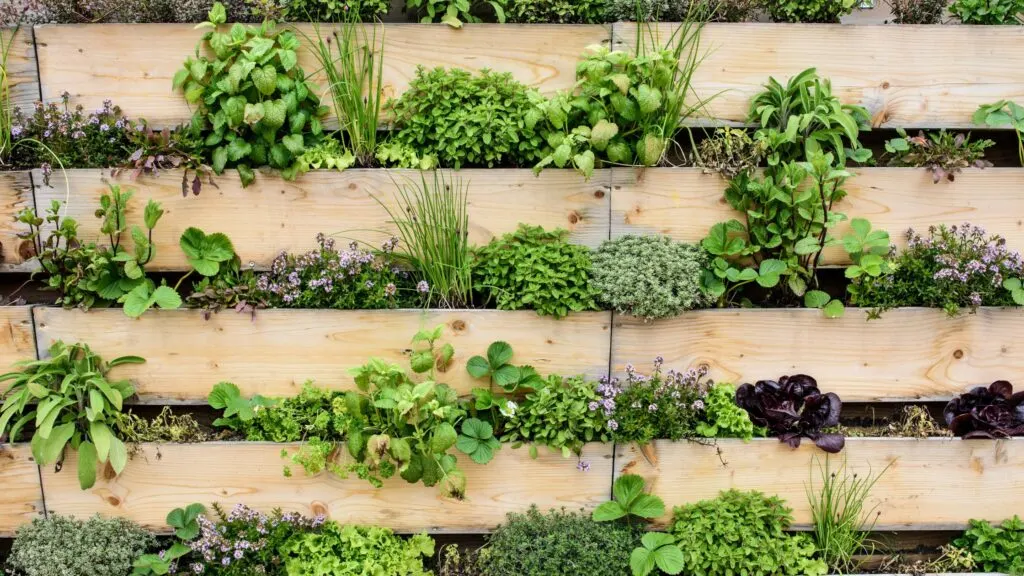
Is a Tower Garden Hard to Build?
Building a tower garden is not hard, but it will require your time and patience. First, you’ll want to make sure your containers are a perfect size, then move on to the drainage hole, which you should drill into each of your containers.
Then it’s just a matter of stacking your tower garden on top of each other and filling the bottom layer with soil.
Tower Gardening Is Healthy Gardening
Yes! Tower gardens are a great way to use organic gardening techniques since it doesn’t involve the soil. You can grow fresh fruits, vegetables all year round because of this method and find out how healthy it is.
The best thing about tower gardening is that it allows you to grow multiple plants in a small area. It’s also not hard to build and maintain, and you can even do it with your kids!
Tower Gardens can be a great way to grow your food and save money. They’re perfect for kids, require little maintenance, and don’t need soil or fertilizer. The best part about tower gardens is that they’re easy to build and maintain!
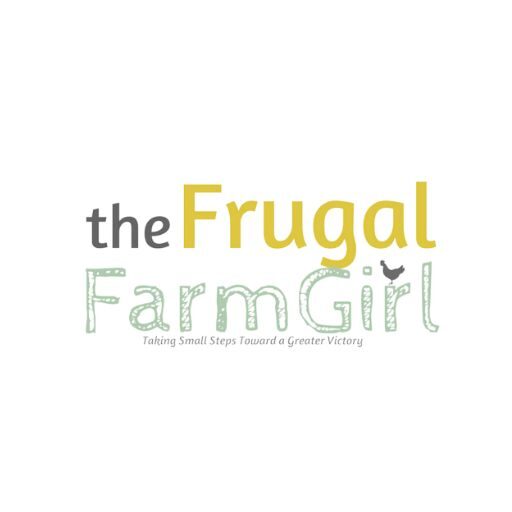
Lynne
Sunday 30th of July 2023
I’m pretty sure that carrots and other root vegetables can’t be grown in a Tower Garden.
Tasia
Monday 31st of July 2023
Look for mini ones like Atlas varieties, and it won't give you a huge yield but can still be done and a fun experiment.